
Robots are playing an important role in fighting the coronavirus SARS-CoV-2 around the globe as they can be used to quickly disinfect areas, such as hospitals.
Disinfection robot UVD, for example, has been in high demand since the outbreak of the COVID-19 pandemic. Chinese hospitals have ordered more than 2,000 UVD robots by Danish manufacturer Blue Ocean Robotics. They started to destroy viruses in Wuhan, where the global pandemic began. The units operate in more than 40 countries – in Asia, Europe and the United States. UVD uses ultraviolet light (UV-C) to kill harmful microorganisms. The robot is the current holder of the IERA innovation award by IEEE and the International Federation of Robotics (IFR).
“We are now helping solve one of the biggest problems of our time, preventing the spread of viruses and bacteria with a robot that saves lives,” says Claus Risager, CEO of Blue Ocean Robotics. “The immediate demand has increased a lot with the outbreak of COVID-19. Existing customers buy many more units than before, and many new customers are ordering the UVD robots to fight coronavirus and other harmful microorganisms.” This is an ongoing success story for the IERA award winning robot. Blue Ocean Robotics has seen a growth in sales of more than 400% annually over the last 2 years.
UVD aids cleaning processes
The Danish robot moves autonomously around patient rooms and operating theaters - covering all critical surfaces with the right amount of UV-C light in order to kill specific viruses and bacteria. The more light the robot exposes to a surface, the more harmful microorganisms are destroyed. In a typical patient room, 99.99 % of all viruses and bacteria are killed within 10 minutes.
“UVD is a supplementary device which assists the cleaning staff,” says Risager. For safety reasons, it works on its own and automatically disengages the UV-C light if someone enters the room. The collaborative robot can be used in various enclosed spaces – not only in hospitals. The technology also works in environments such as office spaces, shopping malls, schools, airports and production facilities.
“Robots have a great potential of supporting us in the current severe corona pandemic,” says Dr. Susanne Bieller, General Secretary of the International Federation of Robotics.
“They can support us in healthcare environments, but also in the development, testing and production of medicine, vaccines and other medical devices and auxiliaries. Disinfection tasks performed e.g. by UVD units or safe distribution of hospital material in quarantine zones - without personal contact - provided e.g. by Photoneo's mobile robot Phollower, are just two of many examples.”
By now, medical robots represent a well-established service robot market with a considerable growth potential. Sales of medical robots increased by 50% to 5,100 units in 2018. This is according to the statistics published in World Robotics by IFR.
Quick development aids global crisis
Siemens recently partnered with Aucma to develop a disinfection robot. Within a week the companies were able to develop an idea and create a prototype for an intelligent disinfection robot, which will soon join the battle against coronavirus and other viruses in hospitals. The electric robot can disinfect up to 36,000 sq. m in 1 hour and features a robust chassis that can overcome obstacles and navigate slopes.
Led by initiator Yu Qi, Head of Siemens China’s Research Group for Advanced Manufacturing Automation in Qingdao, a team of 10 specialists with a broad mix of experience and expertise were confident that they could develop a new type of robot in a short period of time. Qi works at the laboratory for robotic applications co-established by Siemens and Aucma, where the focus is on developing special robots, unmanned vehicles, industrial robots, and intelligent equipment.
 The Siemens robot can be used in hospital and a variety of other facilities.Siemens
The Siemens robot can be used in hospital and a variety of other facilities.Siemens
Purely electric solution
Most disinfection robots combine a petrol-driven mistorizer gun with an electric chassis. However, on-site refueling of robots is neither clean nor convenient. The team therefore decided to develop purely electric disinfection robots to better cater to the needs of hospitals. The greatest challenges for the developers included ensuring maximum sterilization impact with less disinfectant consumption and providing 360-degree coverage even in confined areas.
Powered by a lithium battery, a robot with double mistorizer guns can disinfect 20,000-36,000 sq. m in 1 hour. A 360-degree camera platform on the top transmits videos and information in real time, coupled with an intelligent vision algorithm that allows the operator to remotely locate affected areas and prevent the spread of infectious diseases at low cost. To make the robots operate easily on various road surfaces, the team adopted a caterpillar chassis instead of wheels to improve their ability to surmount obstacles and handle slopes.
Qi praised the perseverance and dedication of the team. “We joined efforts to make our robots adaptable to different user scenarios,” he says. From the initial idea on February 7 to the prototype on February 15, the process took only a week.
As soon as it is launched, the new robot will be put to use, not only in hospitals but also in schools, offices, manufacturing sites and other public places to support the resumption of work and production.


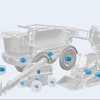

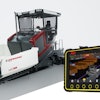
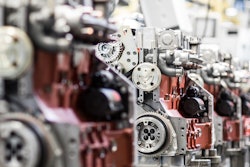
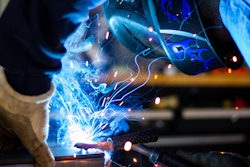
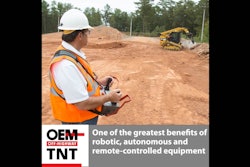
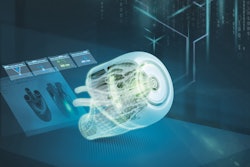


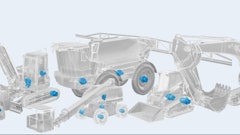
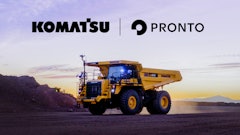
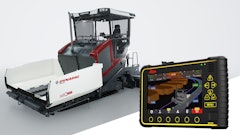
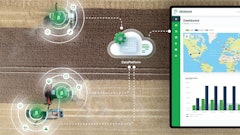
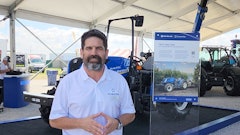

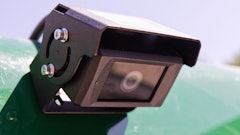

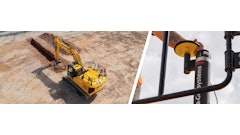
![Hd Hyundai Xite Transformation Booth Image[1]](https://img.oemoffhighway.com/files/base/acbm/ooh/image/2023/12/HD_Hyundai_Xite_Transformation_Booth_Image_1_.657a32d4218f2.png?ar=16%3A9&auto=format%2Ccompress&fit=crop&h=135&q=70&rect=113%2C0%2C1600%2C900&w=240)
